#mexican revolution
Text

Pancho Villa with his elite cavalry detachment "los Dorados" just prior to the Battle of Ojinaga -January 1914- during the Mexican Revolution.
#pancho villa#1910s#revolution#mexico#icons#culture#history#politics#mexican revolution#war#cowboy#retro#military#photos#civil war#soldiers#latin america#black and white photography#people#b&w#🐎
244 notes
·
View notes
Text

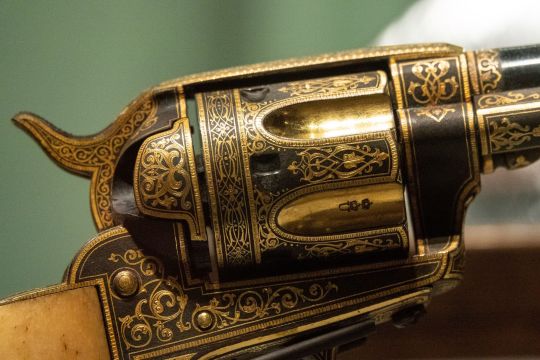
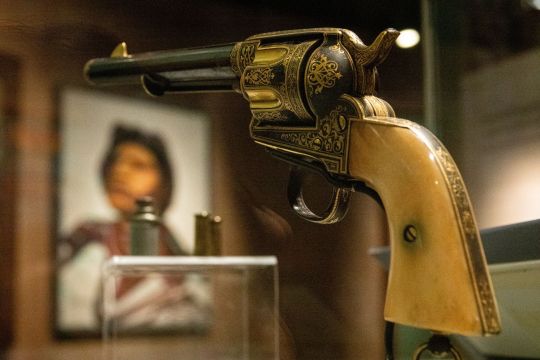
Spanish made copy of a Colt Single Action Army that belonged to Pancho Villa, early 20th century
On display at the National Anthropology Museum, Mexico
1K notes
·
View notes
Text
iViva Zapata!

Emiliano Zapata Salazar was a Mexican revolutionary. He was a leading figure in the Mexican Revolution of 1910–1920, the main leader of the people's revolution in the Mexican state of Morelos, and the inspiration of the agrarian movement called Zapatismo.

Emiliano Zapata was born in the pueblo of Anenecuilco in the small state of Morelos (where this article is currently being written). Born second-youngest into a family of ten, Emiliano had six sisters—and of his three brothers, one, Eufemio, would also attain the rank of general for the Revolutionary Army.
At the age of nine, he saw firsthand the subjugation of the peasantry as wealthy landowners expanded their haciendas and dispossessed the poor’s land. When his father said nothing could be done, young Emiliano turned to him and said, “Nothing can be done? Well, when I am grown, I’ll make them return the land.”

Emiliano and Eufemio Zapata with their Wives - 1911 - by Hugo Brehme
At the age of 16, Emiliano’s mother died. Within the year, he would lose his father as well. An entrepreneurial youth, Zapata worked as a watermelon farmer and bought a team of mules to haul corn from local farms to the Chinameca Hacienda. Then, on June 15th, 1897, the rural forces of Cuernavaca arrested Emiliano during Anenecuilco’s town festival. His brother, Eufemio, secured his release from custody at gunpoint—and the Zapata brothers fled to the state of Puebla.

Zapata read the Plan de San Luis. In particular, he was drawn to Article 3 which addressed land reform, offering restitution to the land owners whose lands had been stolen. [...] Zapata joined an army of 60 peasants who took up arms to join the Mexican Revolution.
By March 10th, 1911, Zapata had mobilized this force—which had grown to 1,000 men calling themselves the Southern Maderistas, He adopted the Plan de San Luis and he was ready to take on the Mexican government—and the government didn’t disappoint. Emiliano Zapata soon found himself pursued by Aureliano Blanquet and his battalion.

Mexico 1911, Zapatista Colonel Amparo Salgado.
During this period, Zapata fought the battles of Chinameca, Tlayecac, Jojutla, Tlaquiltenango, Jonacatepec, and others. During this fighting, Pablo Torres Burgos would die, and Zapata was elected the leader of the Southern Maderistas on March 29th, 1911. At the heart of Zapata’s cause was agrarian reform—so much that the motto of their struggle became, “The land belongs to those who work it.”
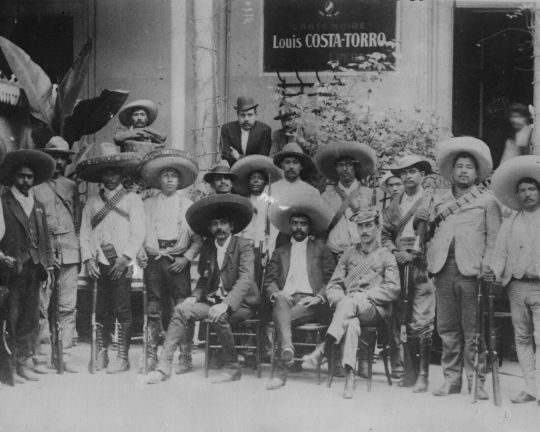
Mexican president Francisco I, met with Zapata in the National Palace. He offered Zapata a large plot of land in his home state of Morelos “as payment for his services to the revolution” if he would only lay down his arms.
Zapata declined the offer—slamming his Winchester pistol hard on Madero’s desk—and said:
No, Mr Madero. I did not rise up in arms to conquer lands and farms. I rose up in arms so that what was stolen can be returned to the people of Morelos. So then, Mr. Madero, either you fulfill what you promised us, to me and to the state of Morelos, or the Chichicuilota takes you and me. Zapata refused to become everything he had fought against: a hacienda owner who had stolen land from the peasants who farmed it. In November of 1911, Emiliano Zapata would form his own plan: the Plan of Ayala—written by Otilio E. Montaño—where its chief concern was the redistribution of the haciendas to the peasants who had worked the land.
Emiliano Zapata edited his Plan de Ayala document, leaving Zapata himself as the sole commander of the Liberation Army of the South—which now numbered 27,000 men.
Zapata continued his military campaign, taking Jonacatepec, Chilpancingo, Cuajimalpa, Xochimilco, and Milpa Alta. The Zapatistas were now a direct threat to Mexico City.
In September of 1914, using his base of operations in Cuernavaca as a temporary capital for his ad hoc government, Emiliano Zapata began relegating the land under his control to the towns themselves.
Zapata’s forces joined Pancho Villa’s. They named Eulalio Gutierrez as their provisional Mexican president—and together they denounced Carranza’s government. In November of 1914, Villa’s Northern Division and Zapata’s Liberation Army of the South conquered Mexico City. This catapulted Zapata to international fame.

General Tomás Urbina, General Pancho Villa & General Emiliano Zapata, in the National Palace in Mexico City, December 1914.
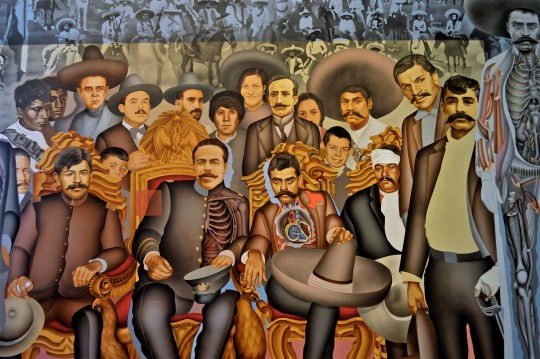
(The Arrival of Generals Zapata and Villa at the National Palace, December 6, 1914) by Arnold Belkin, 1979. - Museo Nacional de Historia
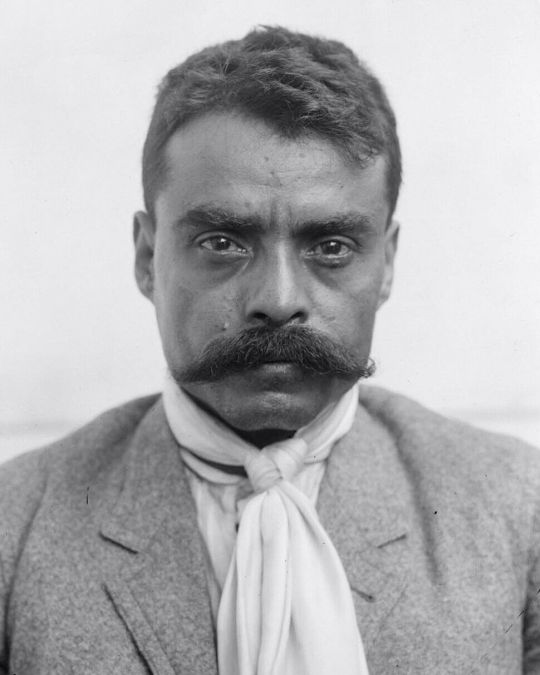
Emiliano Zapata, (born August 8, 1879, Anenecuilco, Mexico—died April 10, 1919, Morelos)
#emiliano zapata#zapata#eufemio zapata#pancho villa#Amparo Salgado#Plan de San Luis#Mexican Revolution#Plan of Ayala#agrarianism#Viva Zapata!
78 notes
·
View notes
Photo

Emiliano Zapata with members of the Liberation Army of the South
938 notes
·
View notes
Text

Soldadera (also called Adelita) - Mexican Revolution
This photograph was taken by Rutilo Patiño in Guanajuato, Mexico in 1940
#soldadera#adelita#mexican revolution#braids#soldier#mexico#history#rutilo patino#mexican history#hairstyle
27 notes
·
View notes
Text

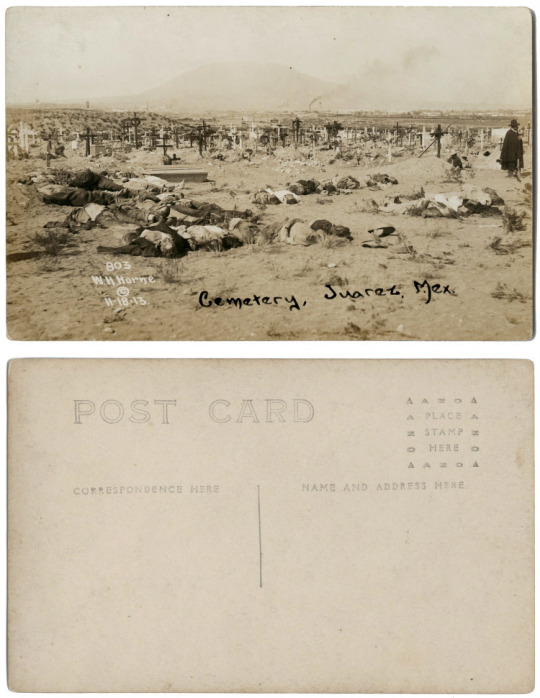




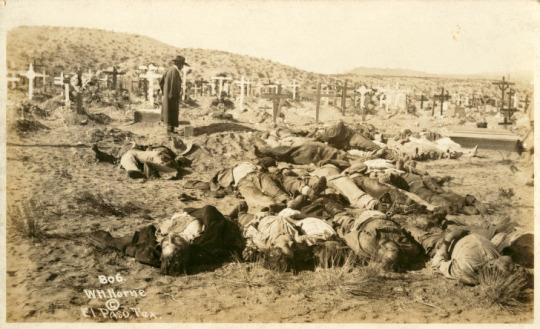


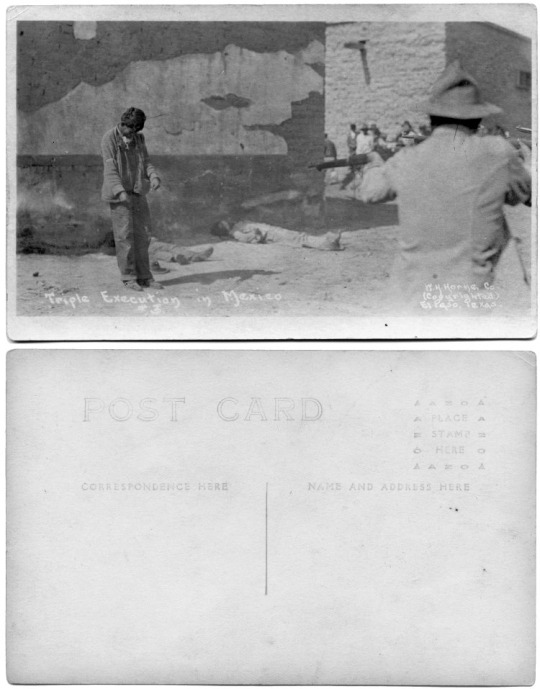
Postcards from the Mexican Revolution (photos by Walter H. Horne, ca. 1910-1916).
24 notes
·
View notes
Text

Maria Gonzalez and two soldaderas circa 1900-1920, in the South Texas border.
22 notes
·
View notes
Photo

American soldiers of 16th Infantry, Company A, around the campfire during the Pancho Villa Expedition. San Jeronimo, Chihuahua, Mexico. 1916
59 notes
·
View notes
Text
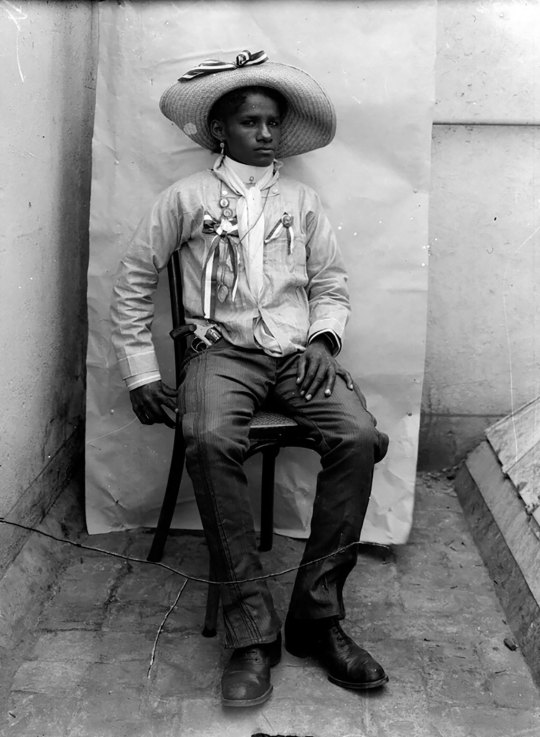
Colonel Carmen Robles from the Zapatista army. She was an Afromexican hero of the Mexican Revolution. The photograph could be taken in 1910 or 1915.
474 notes
·
View notes
Text



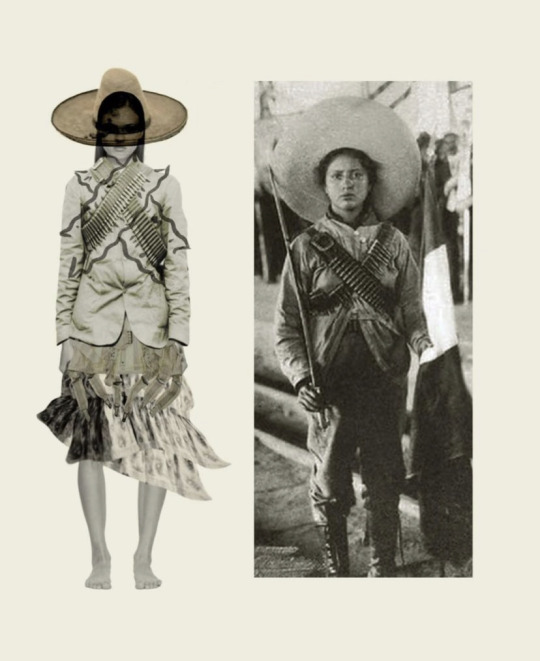

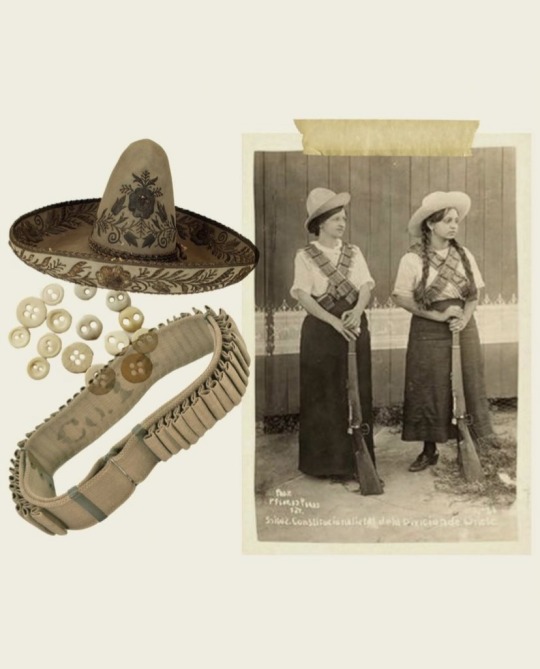
Chavarri S/S ‘23
Samples inspired by Las Soldaderas of the Mexican Revolution.
Paired with an antique Mexican Sombrero from the early 1900s.
"Those that fail to learn from history are doomed to repeat it"
Model: @emilyeanae
#chavarri#s/s 2023#ready to wear#sombrero#mexican fashion#Chicano art#Chicano fashion#vintage photos#mexican revolution#soldaderas#la adelita
68 notes
·
View notes
Text
Where the gods are.
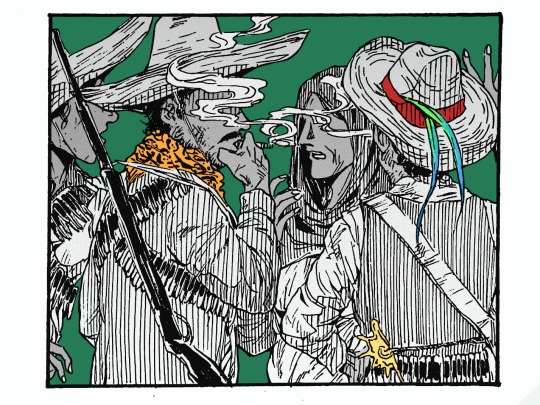
Revolución Mexicana(1910~1920)
(I read this book as a Korean translation.)
33 notes
·
View notes
Text

A pair of Mexican Model 1910 Mauser bolt action rifle from the Mexican Revolution
41 notes
·
View notes
Text
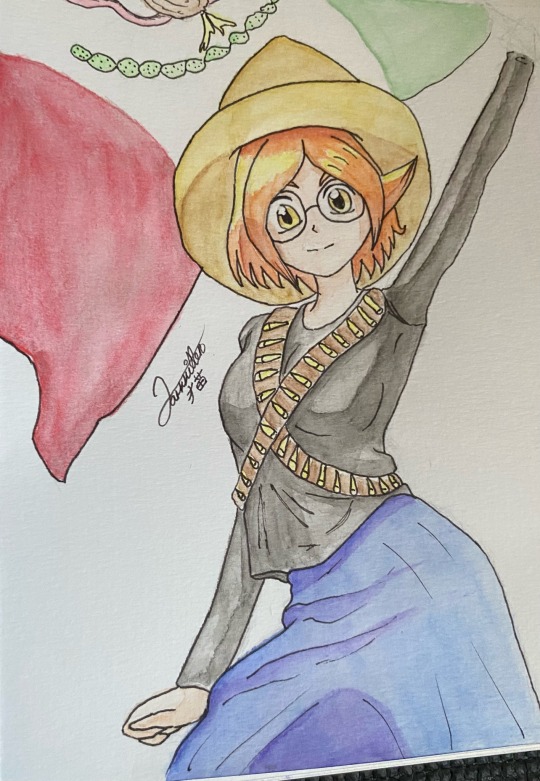
Tomorrow is Revolution Day in my country, so I drew this using watercolors, I still need to practice a lot, but I think it’s looking better than previous watercolor drawings I’ve made, or at least I hope so 🙃
During the revolution, women fought too, they were commonly saw with shotguns or revolvers wearing the ammunition belts on their chests.

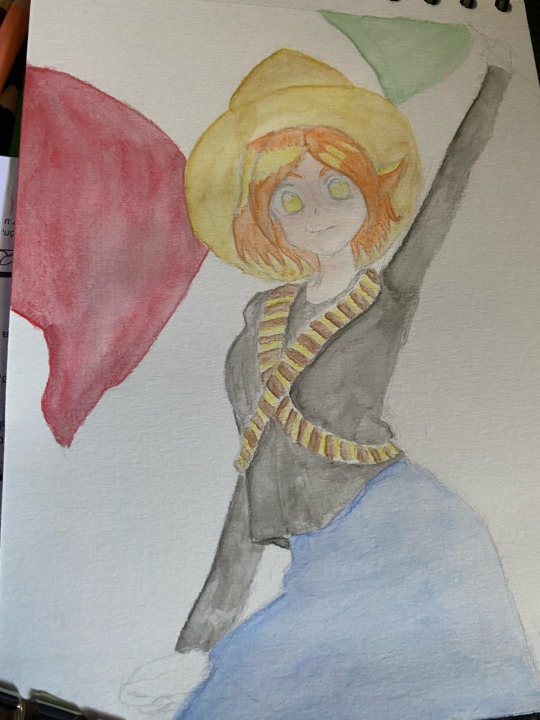
#beyblade oc#oc artwork#oc doodles#oc drawing#oc art#oc illustration#oc#watercolors#watercolor#mexican revolution
8 notes
·
View notes
Photo

Zapatistas Traveling by Train, 1911.
234 notes
·
View notes
Photo

Adela Velarde. During the Mexican Revolution of 1913.
34 notes
·
View notes
